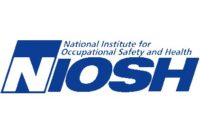 By Jim Harris, Ph.D., P.E. ; Susan Afanuh, MA; Frank Renshaw, Ph.D., CIH, CSP; David L. Parker, MD, MPH; Theodore Braun, MBA; Thomas Cunningham, PhD
By Jim Harris, Ph.D., P.E. ; Susan Afanuh, MA; Frank Renshaw, Ph.D., CIH, CSP; David L. Parker, MD, MPH; Theodore Braun, MBA; Thomas Cunningham, PhD
Source: NIOSH Science Blog
The food manufacturing industry includes animal slaughtering as well as the processing and packaging of meat, dairy, fruit, vegetable, grain, seafood, beverages, and bakery products. The industry employs nearly 1.5 million workers.1 Work in food manufacturing is typically fast-paced and workers can face exposure to hazards such as slips trips and falls, musculoskeletal disorders, and machine-related injuries.2
Although there has been improvement in recent years, workers in food manufacturing have a higher rate of injuries and illnesses than workers in private industry as a whole. For example, in 2012, the injury and illness rate in food manufacturing was 5.4 per 100 workers compared with 3.4 per 100 workers for private industry overall.3 That same year, food manufacturers suffered 18,620 lost-time injuries and 41 fatalities. The estimated cost for those lost-time injuries was over $1.4 billion (direct and indirect costs, at an average $76,000 each).4
Many of the machine-related injuries are related to failure to use lockout/tagout (LO/TO) procedures. An examination of OSHA’s Accident Investigation database (using SIC codes 201-207) showed that from 2003-2013, 28 fatalities and 227 serious injuries (such as amputations) were related to lockout procedures in food manufacturing.5 The largest number of incidents occurred in meatpacking and poultry slaughtering and processing.5 In fact, violation of the lockout/tagout standard (1910.147) was the most frequently cited infraction of an OSHA standard during 2012?2013 in food manufacturing with penalties totaling over $894,000.6
The NIOSH NORA Manufacturing Sector Council members want to help small food manufacturers with LO/TO, and through this blog we are seeking input from our stakeholders to enhance our understanding of the issues surrounding LO/TO in the food and beverage processing industry.
The Pace Challenge
A robust lockout/tagout program that protects the safety and health of workers is an important part of machine maintenance. Machine injuries related to lockout/tagout often occur when an employee services or repairs a machine or tries to clear a jam but fails to de-energize the machine and lock out sources of energy.
Smaller businesses face the challenge of remaining competitive in the food and beverage processing industry, and we know most companies are struggling to keep up with a bustling pace and narrow profit margins.
Pace equals profit in this industry, but workers need to stay safe while maintaining their pace. The efficient work that keeps businesses viable and competitive requires well maintained machines and equipment.
Pace does not have to be a tradeoff for safety; optimal levels of both can be achieved. If something falls off the assembly line and a machine gets jammed, a quick solution may seem like a good option. Given the production pressures in this industry, workers may feel that managers would rather have them risk injury than stop production to properly apply LO/TO procedures. A worker may simply try to clear the jam without taking the time to lock out sources of hazardous energy. But when energy sources are not locked out, any unexpected startup of a machine or other equipment can result in amputations or death. Employers who ‘get it’ know that it is far more valuable to control hazardous energy with LO/TO procedures than to risk both the personal and financial loss that can result from machine-related injury. An injury, death, or even a fine from a violation can quickly nullify gains from increased work speed.
Save a life: Block that energy!
Follow OSHA requirements regarding de-energizing machines and locking out sources of energy.7 Some elements of a successful LO/TO program include:
· Written procedures
· Documentation of each source of energy
· Locking and tagging devices
· Verification of energy isolation
· Proper locks at proper places (isolation points)
· Training (including skills demonstration) in the primary language(s) of employees.
· Auditing of work process
NIOSH recommends that any hazardous energy control program include both lockout and tagout procedures to ensure maximum protection. The NIOSH recommendations for lockout and tagout are described in the following documents:
Using Lockout and Tagout Procedures to Prevent Injury and Death during Machine Maintenance
Companies with established lockout programs have told us that having written procedures ahead of time allows for machine maintenance and service to proceed without delay.
Share with us the type of lockout/tagout program you have in your business.
What resources were used to implement the program that could help small business improve their practices?
What works well about it?
What has made it difficult to maintain the program?
Sharing your experiences with LO/TO will help NIOSH and our partners better understand the issues so that we can provide the best guidance and resources to help save lives.
Dr. Harris is a Research Safety Engineer in the NIOSH Division of Safety Research.
Ms. Afanuh is a Technical Information Specialist in the NIOSH Education and Information Division
Dr. Renshaw is the managing member at Bayberry EHS Consulting, LLC and the National Occupational Research Agenda (NORA) Manufacturing Sector Council Co-Chair.
David L. Parker, is a Senior Researcher at Park-Nicollet Health Systems and a member of the NORAManufacturing Sector Council.
Mr. Braun is an Adjunct Professor at the Keene State College and a member of the NORA Manufacturing Sector Council.
Dr. Cunningham is a behavioral scientist in the NIOSH Education and Information Division.
References
1. BLS [2014]. Industries at a glance. Food manufacturing: NAICS code 311. http://www.bls.gov/iag/tgs/iag311.htm
2. Safety+Health [2013]. Industry spotlight: food manufacturing. Safety+Health April:52. http://www.safetyandhealthmagazine.com/articles/industry-spotlight-food-manufacturing
3. BLS [2013]. Employer-related workplace injuries and illnesses – 2012. http://www.bls.gov/news.release/pdf/osh.pdf
4. Harris S [2014]. It’s safer to eat the product than it is to work in many food manufacturing facilities. http://www.knowledgeatwork.com/workplacesafety/its-safer-to-eat-the-product-than-it-is-to-work-in-many-food-manufacturing-facilities
5. OSHA [2014a]. Fatality and catastrophe investigation summaries. https://www.osha.gov/pls/imis/accidentsearch.html
6. OSHA [2014b]. Frequently cited OSHA standards. NAICS Code 311: food manufacturing. https://www.osha.gov/pls/imis/citedstandard.naics?p_esize=&p_state=FEFederal&p_naics=311
OSHA standards require the use of either lockout or tagout. OSHA requirements can be found at https://www.osha.gov/pls/oshaweb/owadisp.show_document?p_table=STANDARDS&p_id=9804 • OSHA provides a sample lockout procedure at https://www.osha.gov/pls/oshaweb/owadisp.show_document?p_table=STANDARDS&p_id=9805 • NIOSH recommendsthat any hazardous control program include lockout and tagout to ensure maximum protection. Also note that some State plans may have more stringent requirements than those found in 29 CFR 1910.147.







